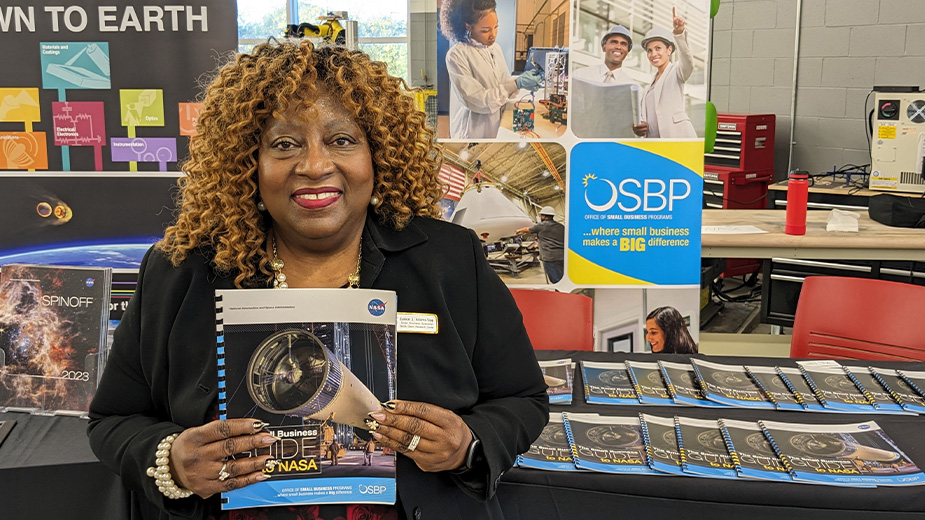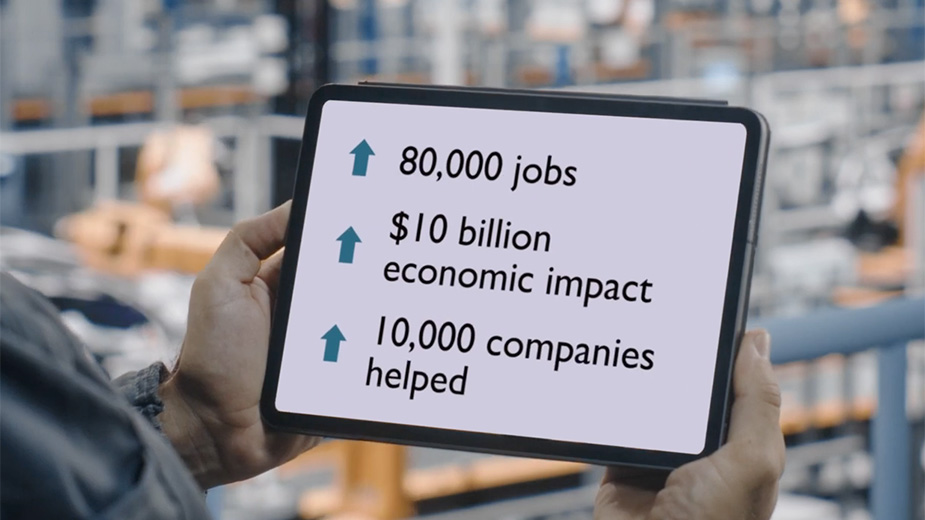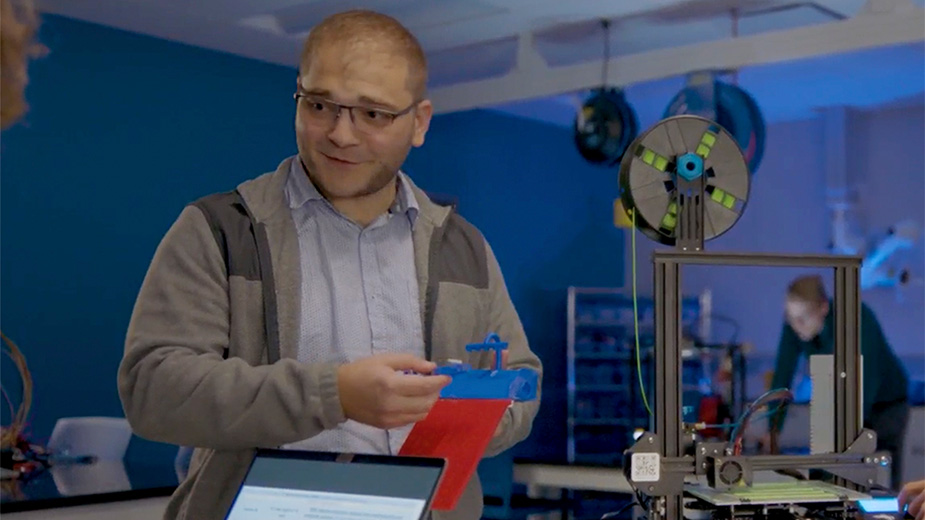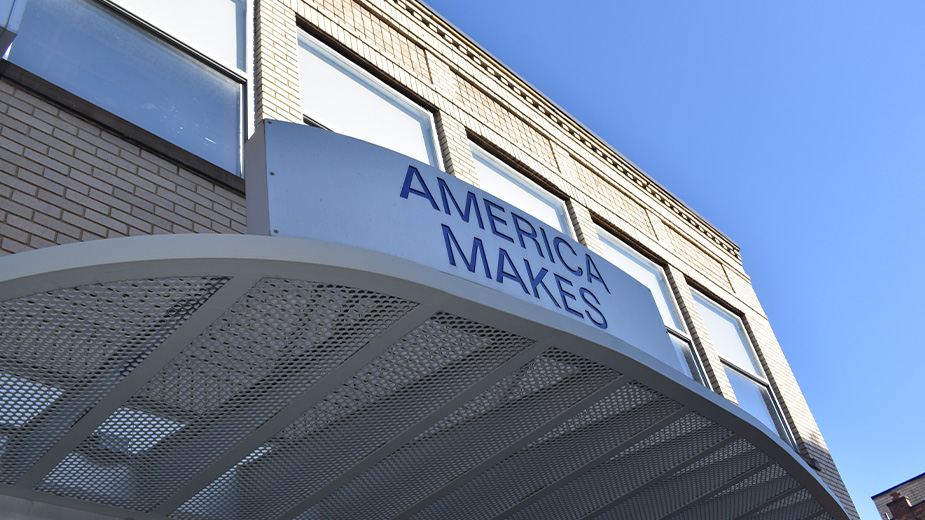YSU, America Makes Events Highlight Manufacturing Opportunities
YOUNGSTOWN, Ohio – Small-business owners and manufacturers learned about working with federal agencies to leverage funding and expertise, while students experienced what it’s like to think like a manufacturer.
Both Youngstown State University’s Excellence Training Center in Kohli Hall and America Makes staged events Friday as part of Manufacturing Day.
The ETC hosted speakers from the U.S. Navy, NASA and private industry, and America Makes brought in businesses to help eighth-graders learn about manufacturing careers.
The U.S. Department of the Navy’s Small Business Innovation Research/Small Business Technology Transfer Programs works with U.S. small businesses, “two people in a garage with a great idea” that will someday become the next iRobot or other innovation, said its diretor, Bob Smith.
“All of those started with SBIR, so it’s a great way for your tax dollars to pay you to follow your passion when it comes to research,” Smith said. “It’s going to take your idea and make a prototype and demonstrate that it works, and then we, the government, continue that progression, just like in manufacturing, to where you can deliver that product and become part of the DOD defense program that provides the best technologies possible …”
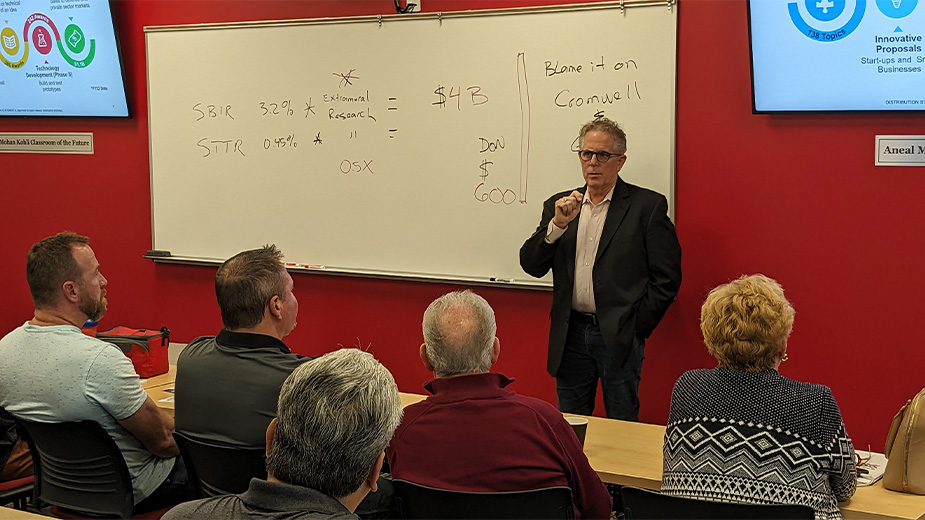
That could apply to scientists, engineers, mechanics or anyone with a great idea who’s ready to turn it into a reality, he said.
Smith said the SBIR website lists the steps required and guidance for those who are interested.
Eunice Adams-Sipp, small-business specialist at National Aeronautics and Space Administration’s Office of Small Business Programs at the Glenn Research Center, educated audience members at the ETC about how to work with the center.
“Small businesses are so important to our center,” Adams-Sipp said. “The unique thing about the Glenn Research Center is the majority of our mission is completed by small businesses.”
Small businesses support everything at the center from research and development to facilities, construction and custodial services.
“Small businesses have always been important to us,” Adams-Sipp said. “I’m actually really passionate about small businesses because we have, like, the SBIR/STTR program for the small businesses that are doing technical research that will actually go to commercialization.”
Tom Doehne is the partnership/commercialization specialist in NASA Glenn Research Center’s Technology Transfer Office.
“I look to license our technologies to universities and industry,” he said.
The center, located in Cleveland, has a space technology innovation research program where companies work to develop technologies for NASA’s mission. The center also uses its technologies to help industries develop commercial products.
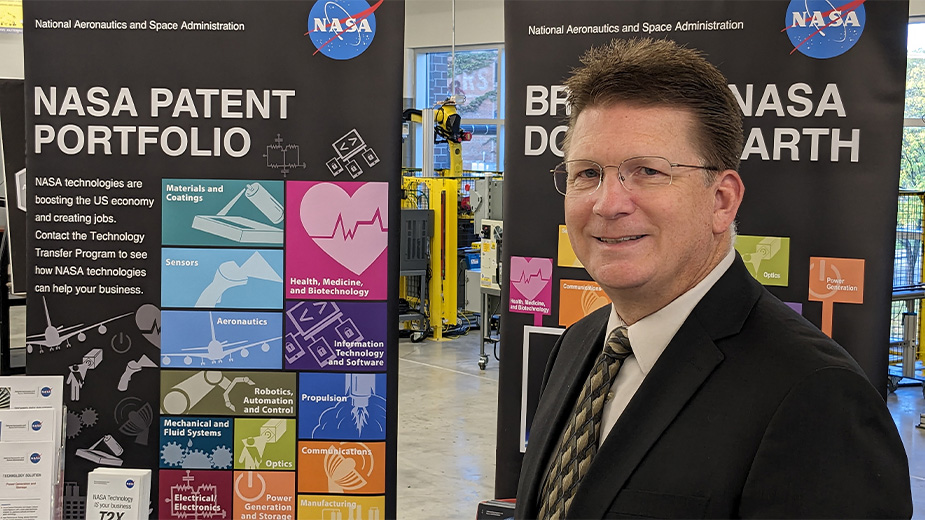
“We’re looking to engage with small businesses, entrepreneurs, startups and also universities in general,” Doehne said. “We have lots of funded programs for university and industry to take advantage of.”
The center is looking for industry to help it develop some of those technologies “that we need to be able to go back to the moon and to go to Mars because NASA can’t do it all on their own,” Doehne said. “We’re trying to work with industry and universities to take some of the work that they’re doing and infuse it into our programs.”
NASA is trying to engage more small businesses and entrepreneurs to use their innovative and creative motivation to develop products and build businesses, he said.
Small businesses may offer more flexibility than a larger company.
There’s already a Mahoning Valley company working with the agency.
Petra Power, a portfolio company of Warren’s Brite Energy Innovators, is working with NASA to develop its solid oxide fuel cell technology for commercial use.
Joey Pettit, data analyst in the Talent Pipeline Program at TMG in Virginia, talked about how the United States moved away from manufacturing after World War II and the need to revive it.
Coming out of WWII, 30% of U.S. manufacturing was supporting the defense industrial base. It’s now about 10%. That decrease [became] apparent after the Cold War.
“That’s a problem for multiple reasons. One, for national defense,” Pettit said. “We have to have 100% control of what we are giving our soldiers, sailors, airmen, Marines, guardians to go out and do our nation’s business, protect our country and people, our families.”
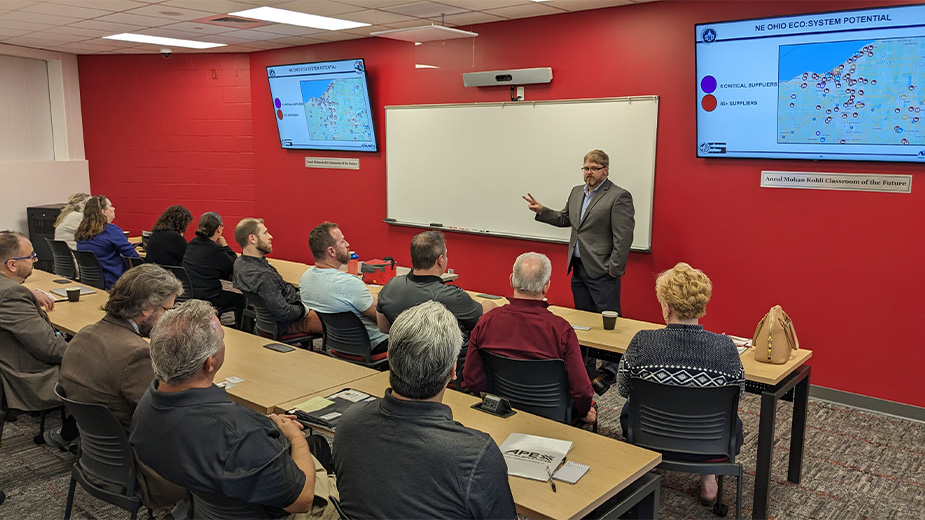
It’s also important because of the economy. At the current level of manufacturing in the U.S., the economy will continue to decline.
“It got this dire because we got complacent,” Pettit said. “We allowed ourselves to say, ‘We’re the superpower and everyone else is subservient to us.’”
The U.S. moved its emphasis from manufacturing to technological development.
“Not that tech development isn’t important, but we can’t sacrifice one for the other,” he said.
To fix it, the president and members of Congress have to make it a priority, Pettit said, adding that it’s starting to happen.
“Through the Department of Defense, we can see the investment is coming back into the defense industrial base,” he said. “They’ve acknowledged we need to do better with talent acquisition and retention.”
Businesses can help by examining their processes to determine what’s effective versus what’s ineffective, and then make changes.
To ensure there are workers to fill available jobs, we need to work with the local training providers to build the skills that businesses and manufacturers need.
“The second thing we have to look at is, folks have to have a living wage …,” Pettit said. “Employers have to look at what they’re paying, what their benefits are and if they’re competitive.”
Adding to the problem is that several years ago, schools stopped offering the types of training that manufacturers now want for their employees. One of the reasons is because schools were trying to prepare students for the jobs that were in demand at that time, or those in technology.
“But not everyone is built for college,” Pettit said.
People can make a great living in the trades, and people from industry need to communicate that to students.
America Makes’ Manufacturing Day event took a step toward that.
Eighth-graders from Warren City Schools visited the center to learn about the engineering design cycle. The event was presented with Ten80 Education and involved the Mahoning Valley Manufacturers Coalition.
Emily Young, America Makes’ education and workforce development program coordinator, said the day involved the expertise of people from Valley businesses.
“The student activity is creating wheels for a little car,” she said. “The whole process is coming up with an idea, then creating a prototype, and their prototype has to be something that can be easily repeated, just like the manufacturing world.”
Then the student teams had to test their prototypes, making them within certain constraints and tweak the designs. The project used art supplies like clay, wooden dowels and spokes.
“They are all students who have an interest in manufacturing just based on different in-classroom assessments,” Young said.
Brilex Industries, Vallourec, Oh Wow! The Roger & Gloria Jones Children’s Center for Science & Technology, Schwebel’s, Hynes Industries, Foxconn and CMT participated, with representatives meeting and networking with the students, providing their expertise.
The eighth-graders from Warren City’s four K-8 schools were divided into teams and worked as manufacturing engineers. They designed a working wheel for a small, wooden car and a process to manufacture multiple identical wheels. Then they tested their prototypes to see if they rolled down a ramp intact.

Connor Corwin, Aaron Brogdon and Karter Adams, all 13 and from Willard K-8, called their company KAC Manufacturing, using the first initial from each of their first names.
Their car rolled down the ramp but lost a couple wheels along the way.
Aaron said they should have used longer dowel rods to attach the wheels to the body of the car.
“We should have spaced out the tires,” Connor added.
Aaron likes to make things with his hands, so he was drawn to Friday’s event.
Robert Middleton, a counselor at Warren’s McGuffey K-8, said the district wanted to expose students to the world of work and innovation. It helps students learn about careers that are available in manufacturing, engineering and the trades.
“I think that one of the things they’re learning is that there are other possibilities for work other than the traditional routes,” Middleton said. “College can help them with that, but also this program can expose them to interests they might not know they even had.”
Jason Jones and Grace Stigliano, are the machining manager and recruiter, respectively, from Brilex.
“We’re trying to build the younger generation’s interest in manufacturing,” Jones said.
It shows that manufacturing is more than just the ideas students have in their heads, he said. It’s more modern with computers and virtual reality and welding, for example, Jones explained.
Brilex has a need for welders, machinists, assemblers, fitters and maintenance technicians.
“Training is big, but also there’s just a lack of skilled trade candidates in the area,” Stigliano said.
With many companies in the area growing, there aren’t enough people with the required skills to fill the available jobs, she said.
MVMC works to address that.
“Our overarching mission is to create a sustainable workforce for manufacturing, but really to be able to do that in the long-term, we have to be able to get students involved in that,” said Alex Hertzer, MVMC senior project manager.
The coalition is doing that through exposure. The day’s events also encouraged the students to think the way manufacturers think, he said. Students had a budget, had to meet time constraints and design requirements as part of the activity.
“They had to be creative on one hand but also be technical in their measurements and things like that, so getting them to kind of use their brain in a different way than they’re used to,” Hertzer said.
Pictured at top: Eunice Adams-Sipp, NASA small-business specialist in the Glenn Research Center’s Office of Small Business Programs.
Copyright 2024 The Business Journal, Youngstown, Ohio.
